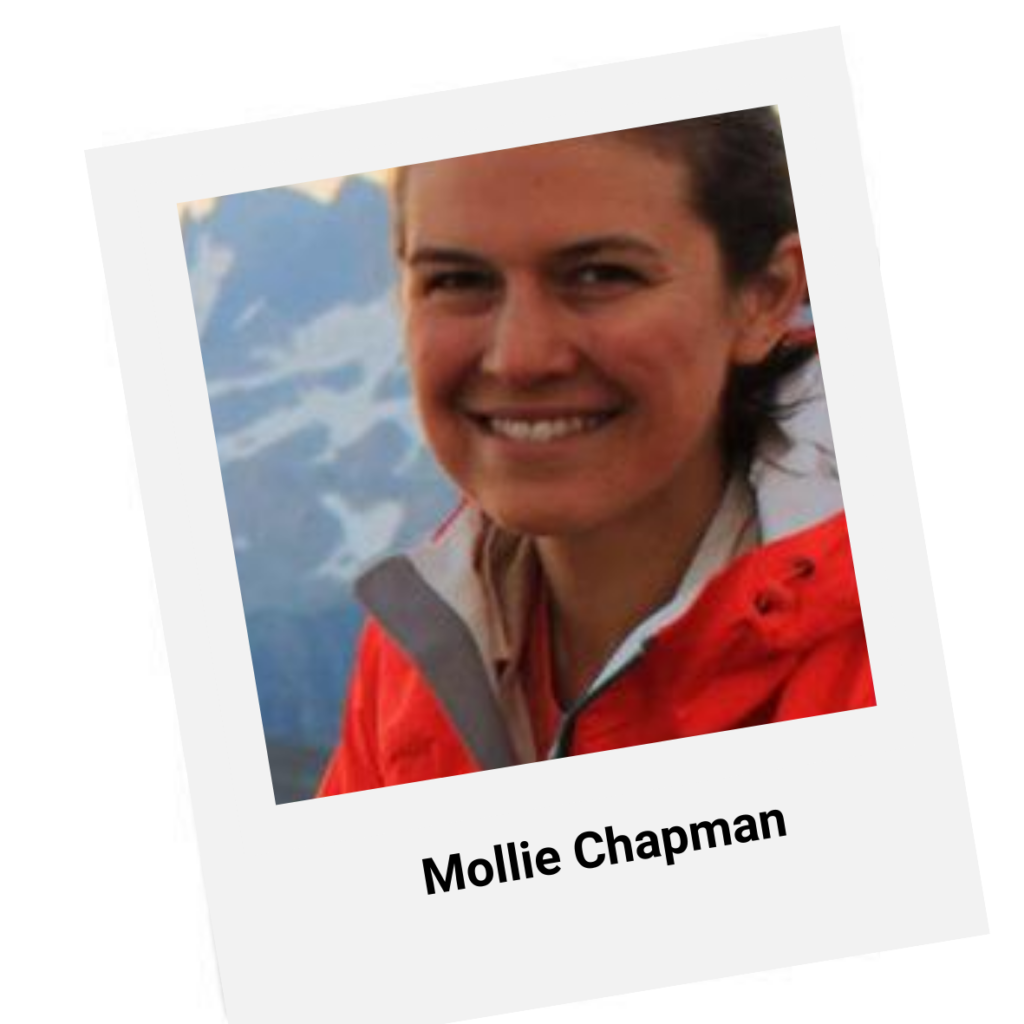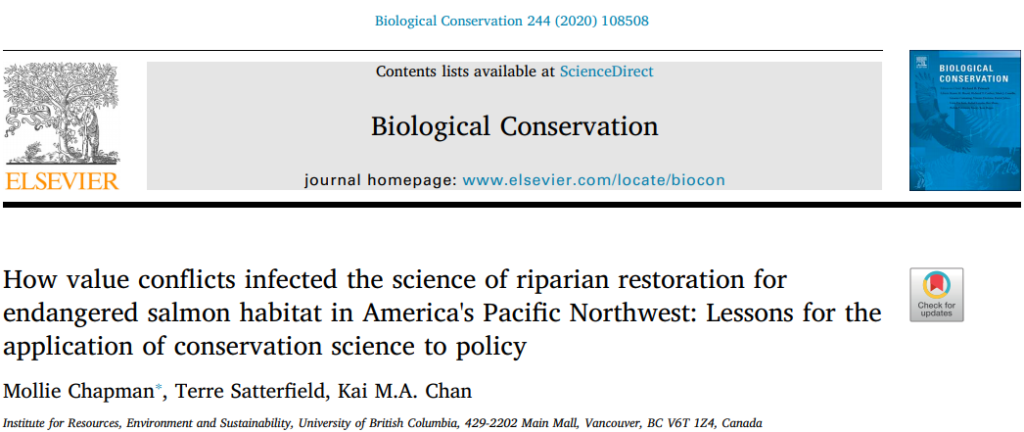New study on riparian buffers by Mollie Chapman

Mollie Chapman who was on the team of SCBC’s researchers for Stewardship Practices for Species-at-Risk case studies, has completed her PhD at the Institute for Resources, Environment and Sustainability, University of British Columbia.
Mollie’s research examined a conservation incentive program targeted at farmers in Washington State’s Puget Sound region.

Conservation policy relies on input from science, yet scientists are often frustrated by the ‘gap’ between their recommendations and policy decisions. In this paper, we examine one such ‘gap’: how a long-standing conflict of values functioned to ‘infect’ the synthesis and application of riparian science for salmon habitat restoration projects. We do this by analysis of a policy debate over the required minimum width of riparian buffers in voluntary conservation programs on agricultural lands in the Puget Sound region of Washington State. – Chapman et al.
Click to read Dr. Chapman’s original paper published in Biological Conservation journal:
Chapman, M., Satterfield, T., & Chan, K. M. A. (2020). How value conflicts infected the science of riparian restoration for endangered salmon habitat in America’s Pacific Northwest: Lessons for the application of conservation science to policy. Biological Conservation, 244, 108508. http://doi.org/10.1016/j.biocon.2020.108508





